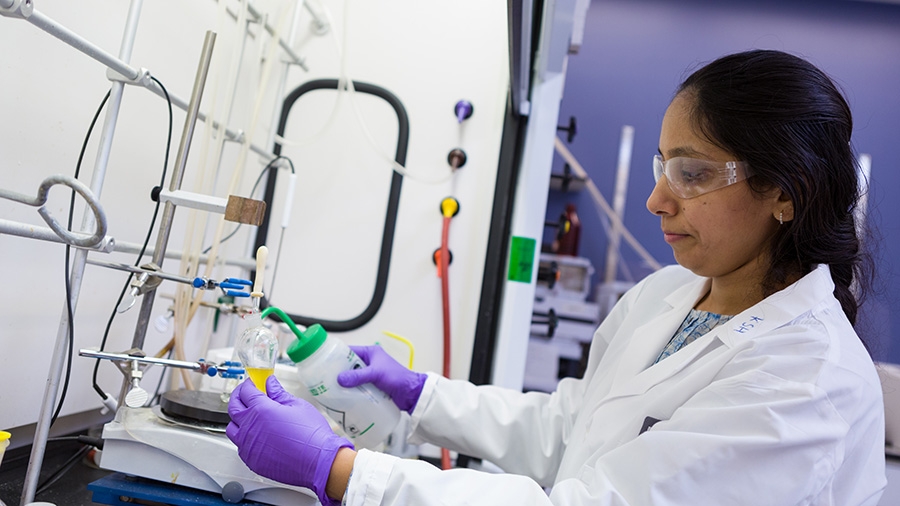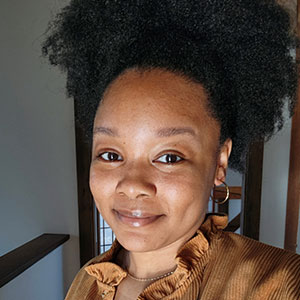Fulfilling unmet medical need: Novel medicine disclosures
“A lot of people in (medicinal chemistry) have a similar origin story,” H. Rachel Lagiakos said. “There is someone that you loved that was touched by an illness, and you had to watch that almost helplessly.”
Lagiakos is the director of medicinal chemistry at Schrödinger, a physics-based computational platform for creating novel molecules. Her uncle was diagnosed with HIV in the early 1990s.
The HIV medicines available then gave Lagiakos 20 more years with her uncle, time she otherwise would not have had. That gift of time first drew her toward pharmacy.
But, in college, Lagiakos attended a local meeting of professional chemists. There, she discovered a different path.
“I (told them) I wanted to … make drugs to help people,” Lagiakos recalled.
“They said: ‘You don’t want to be a pharmacist; you want to be a medicinal chemist.’”
Lagiakos got her Ph.D. in organic chemistry and pursued a career in industry. She joined Cancer Therapeutics, a small company in Melbourne, Australia. After two years as a research fellow, Lagiakos became a senior research officer and led a project designing target molecules for a novel epigenetic target with potential implications for cancer.
After a few years at Cancer Therapeutics, Lagiakos joined an early drug discovery team at Schrödinger as an early adopter of computational molecular design technology.

Creating novel medicines
At Schrödinger, medicinal chemists use computer simulation software to predict which compounds might have favorable pharmacological effects. Lagiakos’ multidisciplinary team, for example, is developing treatments for Parkinson’s disease.
“The unmet medical need there is extraordinary,” Lagiakos said. “(Our challenge is) to modulate the target in a way that ameliorates the disease while limiting adverse side effects.”
She pioneered methods to predict which compounds will likely penetrate the blood–brain barrier. Better predictions mean fewer compounds synthesized, less animal testing and, as Lagiakos put it, “getting to the right answers faster.”
Shaping the scientific conversation
That same drive to advance medicines fuels Lagiakos’ volunteer work. She organizes the Division of Medicinal Chemistry, or MEDI, First Time Disclosures sessions at American Chemical Society meetings. There, scientists from biopharmaceutical and biotechnology companies apply to present first-in-class drugs currently in clinical testing.
She sources talks, chairs the session and curates the scientific conversation by bringing companies and their molecules to the forefront.
“For me, it’s an opportunity to give back to the community that helped support me,” Lagiakos said.
Lagiakos said volunteering also offers personal rewards. She gets a front row seat to novel disclosures and expands her medicinal chemists through connections with speakers from around the world. The session is high impact, drawing attention to new science and giving visibility to the people behind it.
Lagiakos is seeking proposals for this meeting, to be held in 2026 in Atlanta. Any company that is ready to disclose the structure of their “active clinical asset for the first time in a high-impact, high-visibility setting” should contact her.
“At the end of the day, it’s all about bringing safe and effective disease-modifying drugs to patients,” Lagiakos said. “That’s what motivates me.”
Enjoy reading ASBMB Today?
Become a member to receive the print edition four times a year and the digital edition monthly.
Learn moreFeatured jobs
from the ASBMB career center
Get the latest from ASBMB Today
Enter your email address, and we’ll send you a weekly email with recent articles, interviews and more.
Latest in Careers
Careers highlights or most popular articles

Building the blueprint to block HIV
Wesley Sundquist will present his work on the HIV capsid and revolutionary drug, Lenacapavir, at the ASBMB Annual Meeting, March 7–10, in Maryland.

Upcoming opportunities
Present your research alongside other outstanding scientists. The #ASBMB26 late-breaking abstract deadline is Jan. 15.

Upcoming opportunities
Present your research alongside other outstanding scientists. The #ASBMB26 late-breaking abstract deadline is Jan. 15.

Designing life’s building blocks with AI
Tanja Kortemme, a professor at the University of California, San Francisco, will discuss her research using computational biology to engineer proteins at the 2026 ASBMB Annual Meeting.

Upcoming opportunities
#ASBMB26 late-breaking abstract submission opens on December 8. Register by Jan. 15 to get the early rate on our Annual Meeting.

Make your abstract stand out
Ensure your research is impossible to overlook. Get quick, practical reminders for crafting an abstract that attracts readers and helps you build connections at the conference.

